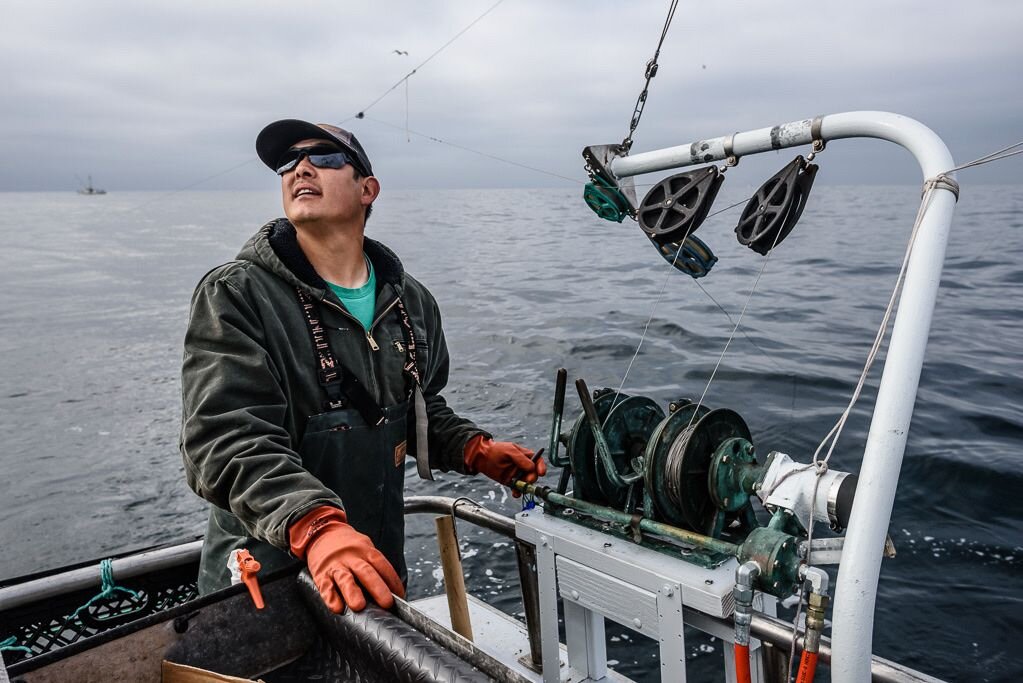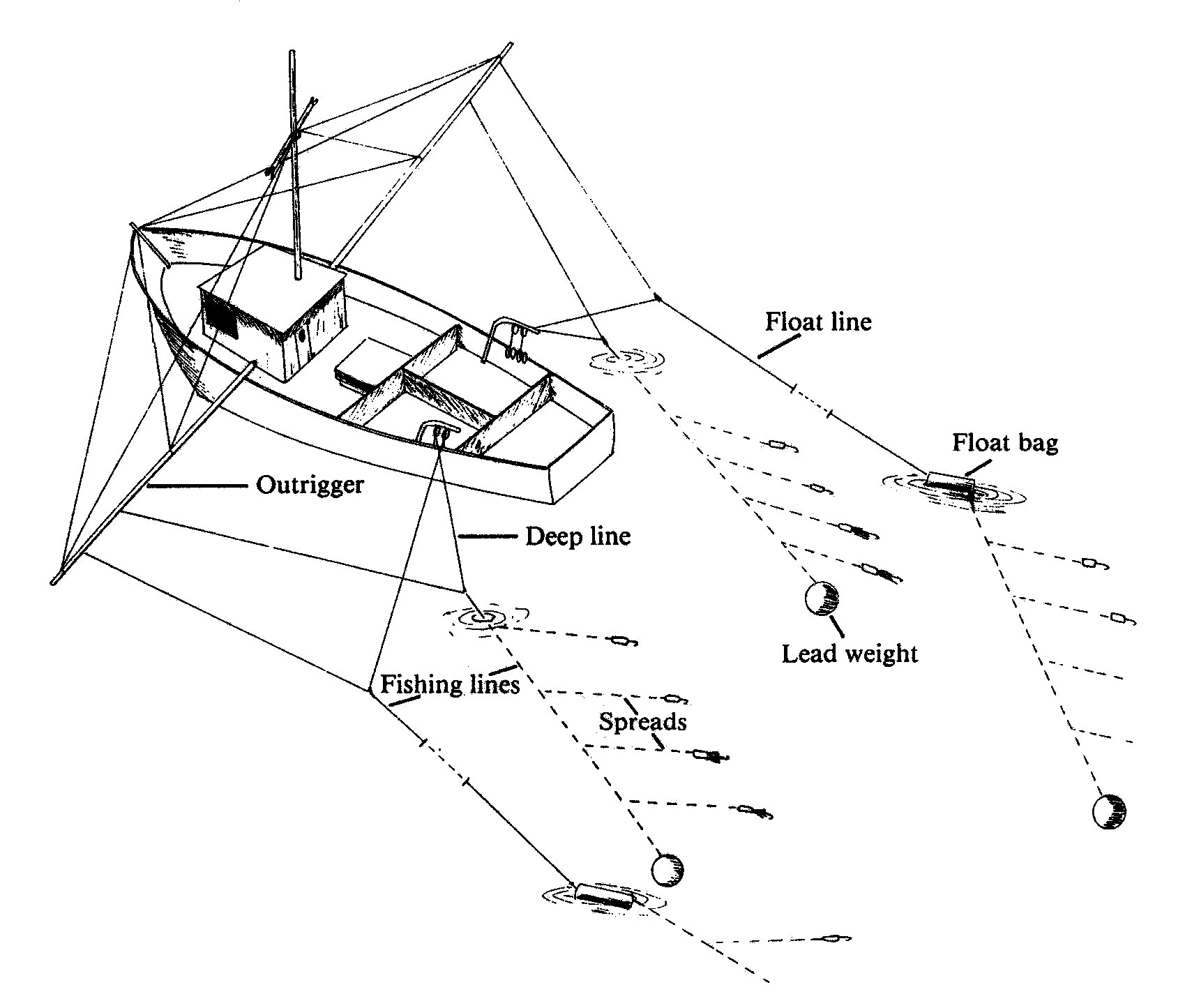Fishing Gear Types 101: Trolling
David Toriumi of the F/V Sable trolling for salmon, summer 2018. Photo by David Hills of @FishyPictures.
Trolling
King salmon, albacore tuna
In its most basic sense, trolling is the method of drawing lines with baited hooks or lures behind a boat for fish to bite. While this sounds simple, it’s far from it.
Fishermen can spend a career perfecting their craft: knowing the interplay of boat speed, outriggers, downriggers, float lines, deep lines, cannonball weights, spreaders, flashers, swivels, hoochies, and spinners—this all might seem incomprehensible, but ask your local fisherman or woman about their trolling setups while you’re buying fresh king salmon at a dock sale, and they’ll be able to show you. Fishermen also have to take into account local weather and water conditions as they target king salmon and albacore swimming at varying depths up to 500 feet.
Salmon trollers come large and small, with those from 30 to 65 feet in length embarking on multi-day trips that could take them south to Morro Bay or north to Fort Bragg. Smaller day boats range from 15 to 30 feet and stay in the general vicinity of Monterey Bay. Large boats have electric or hydraulic reels, known as gurdies, to pull in the lines. Small boats often use rods, reels, and handlines.
Illustration courtesy of California Sea Grant.
Fishermen catch albacore tuna in and around Monterey Bay, but these migratory pelagic fish haven’t come by the area in significant numbers in almost a decade. Albacore trollers are often larger boats, at times traveling into international waters more than 200 miles off the coast to find their catch.
The commercial salmon season usually runs from May to September, but fishing time on the water is highly regulated by the Pacific Fishery Management Council and limited by the abundance of salmon in a given year. When around, Albacore tuna are caught in the summer and early autumn.


